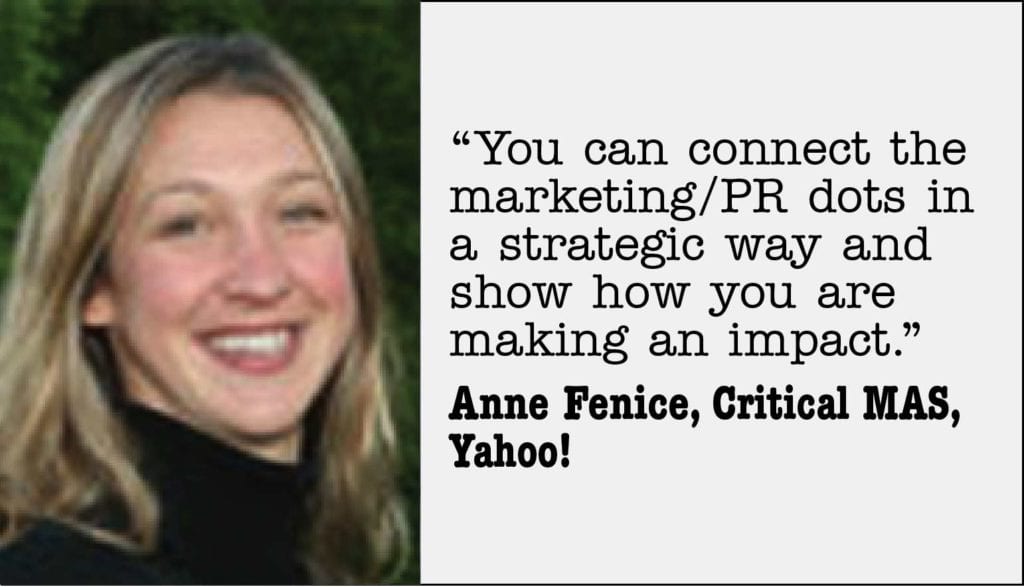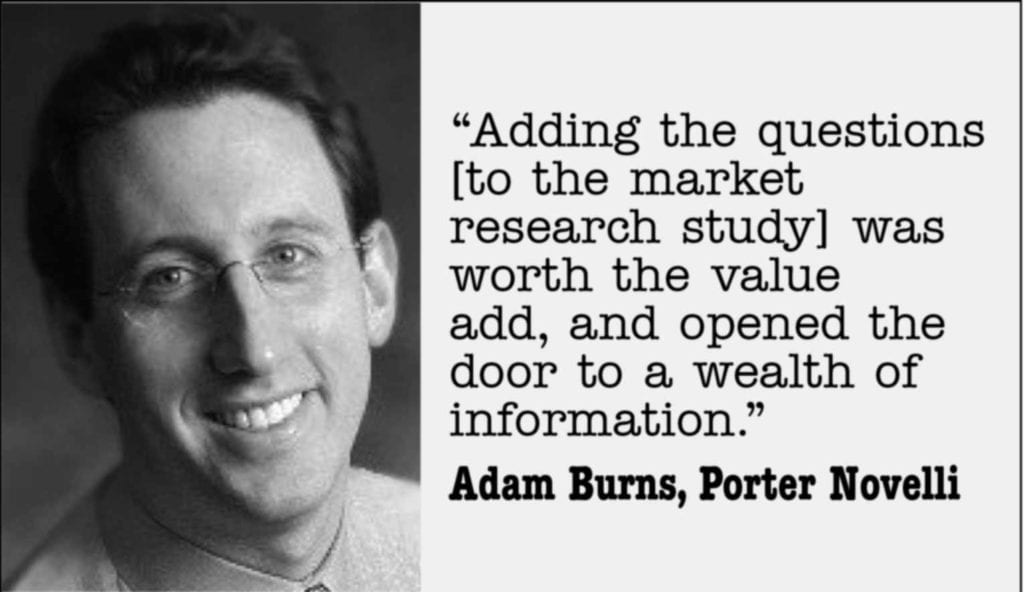There’s no mistaking that the chasm between marketing and PR is closing. As marketing and PR work more closely together on campaigns—bridged particularly by shared social and digital media roles—the cooperation between the two functions is improving.
However, in the case of sharing market research, there is still an unfortunate disconnect, says David Rockland, partner/CEO of global research at Ketchum. “Sometimes PR pros will be distant from the people responsible for marketing research,” says Rockland. And that puts PR at a disadvantage, because, continues Rockland, if a PR pro can gain access to surveys and other forms of marketing analytics, it can be informative in terms of what works and what doesn’t for a campaign—and equally informative for PR measurement.
MINING MARKETING
But just how does this research opportunity for PR come about? A company often will deploy a brand or ad tracking survey that is used to track how the brand is doing. The opportunity comes in the form of PR adding a question or two to these brand surveys. “These are questions that would help identify the effect of a PR campaign on earned media, image or purchase, for example,” says Rockland.
 |
In the case of the Centers for Medicare and Medicaid Services (CMS), putting the PR/marketing research pieces together was critical in the success of a 2010 effort to promote open enrollment options for beneficiaries. Frank Funderburk, director, Division of Research for the Office of Communications at CMS, says traditionally media monitoring has been the job of the campaign group (marketing), and surveys that were done to assess media effectiveness were done by Funderburk’s group.
“We thought about the possibility of putting the two pieces together, which could give us a more comprehensive look at how our audience was receiving earned media,” says Funderburk. “This would allow us to get our messages out more effectively and within a smaller budget.”
With the help of Adam Burns, senior VP of strategic planning and research at Porter Novelli, CMS’ agency, more specific questions on earned media were added to the usual tracking surveys. One of the questions was: “Have you heard anything about open enrollment in the past few weeks?” Then a follow-up: “Did you hear about it in the news or in an ad?”
“Adding the questions was worth the value add, and opened the door to a wealth of information,” says Burns. The result of the research union was a more effective open enrollment campaign from both PR and marketing standpoints—via improved messaging.
CAMPAIGN CONFLICT
This kind of success is an exception to the communications rule, says Mark Weiner, CEO of PRIME Research in North America. “Often you can see that an ad campaign is pushing one thing, and PR is pushing something that conflicts with that campaign.”
 |
If all was right with the world, says Weiner, before a market research study is deployed you’d see elements of audience identification, segmentation, media preferences (like the CMS campaign) and message testing. But it’s not a perfect world.
“You’d think that the shared objective for everyone would be to elevate the brand, generate revenue and be profitable,” says Weiner. “But organizations are siloed and territorial, and those shared goals are hard to reach.”
CONNECT THE DOTS
Yet there is a high level of PR/marketing cooperation at Yahoo!, according to Anne Fenice, director of the company’s Critical MAS (Metrics, Analysis and Systems) team. A function of the global communications, Critical MAS is heavy into data-driven insights that improve strategy and execution for Yahoo! initiatives. And to do that, collaboration with marketing is critical. “We try to connect the marketing/PR dots,” says Fenice.
One example: A marketing consumer study quizzes consumers on a Yahoo! e-mail feature, which alerts them when their friends’ birthdays are. If consumers answer with “it’s a great feature and helps me stay connected,” then, PR takes a look at tech media coverage of the same feature. “You can connect these two dots and show how you are making an impact,” says Fenice.
 |
Critical MAS is also tasked with measuring reputation. The group marries a proprietary reputation measure from a vendor (tone of coverage, eyeballs and more) with surveys of advertisers and media reputation metrics. “This is powerful, but it’s even more effective when you plug in survey data from other stakeholder groups like policy regulators and industry analysts,” says Fenice. “Then you get the full picture.”
TEAR DOWN THAT WALL
That kind of PR/marketing measurement symmetry is hard to come by. How can PR pros start to break down the wall? Rockland has some suggestions:
• Learn how to speak the language of market research.
• Go out of your way to create connections between PR and other departments.
• Don’t be afraid to seek more comprehensive measurement. “In the past, PR pros have had the attitude of ‘things were fine without having to prove our worth.’” says Rockland.
In an ever-evolving, ultra-competitive business environment, that antiquated mindset just won’t wash anymore. PRN
Yahoo!’s Anne Fenice will be speaking at PR News’ Measurement Conference on April 18 in Washington DC. Go to www.prnewsonline.com/measurement to register.
For more articles about measurement, visit PR News’ Subscriber Resource Center: prnewsonline.com/subscriber_resources.html.
CONTACT:
David Rockland, [email protected]; Frank Funderburk, [email protected]; Adam Burns, [email protected]; Anne Fenice, [email protected]; Mark Weiner, [email protected].
